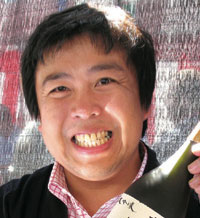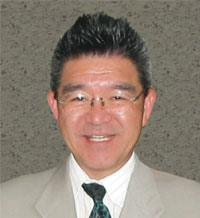Was sake produced since ancient times as “Kanzukuri?”
“Kanzukuri” is a sake production method used during the coldest time of the year. However, until the early Edo Period (1603 - 1868), sake was produced over a long period around the autumn equinox past the spring equinox, divided into five different production methods depending on the season.
“Shinshu” – Sake produced around August of the old lunar calendar (below is also based on the old lunar calendar), also known as “Higanzake.”
“Aishu” – Sake produced during the period between Shinshu and Kanzake. Later in the Edo period, sake production methods were further divided into “Hayaaishu,” produced from mid-September; and “Aishu,” sake produced after mid-October.
“Kanmaezake” – Sake produced during the early winter period before “Kanshu” production begins (around November to December). During the Edo period, “Kanmaezake” was the second most expensive sake following “Kanshu,” while sake produced around the winter solstice was especially known as “Toujimono” (“winter solstice sake”).
“Kanshu” – Mainly sake produced during the approximately 30 day-period from Shokan (early January) to Rissyun (early February). Sake production during this period is known as “Kanzukuri.” Due to sake produced under ideal conditions for sake production, the sake quality is the highest, and prices were also the highest accordingly.
“Haruzake” – Sake produced from February until around the spring solstice.
Sake production skills from the medieval period became established during the Edo period, when production centered around Ikeda, Itami, and Nada evolved. However, the greatest technical characteristic during this period was that sake production method to produce “Kanzukuri” was completed. Nonetheless, the center of sake production shifted full-scale to “Kanzukuri” during the mid-Edo period after 1687. The most highly regarded technical manual for sake production during the Edo period, “Doumoushuzouki” especially valued the “Kanzukuri” production method, defining the “Kanzukuri” sake production period as “during the 90-day period from November to February.”
Also, “Bankinsugiwaibukuro” issued in 1732 stipulated “sake is best produced by the Kanzukuri method.” The “Kanzukuri” sake production skills were completed at Itami, one of the main sake production regions at the time, and spread across various regions with the quality further improving in Nada that came to the forefront of sake production later in the Edo period.
The reason why sake production centered on the “Kanzukuri” production method was because it was discovered from past sake production during various seasons that production during the cold winter season allows easier management of the fermenting-mash product temperatures, more easily inhibiting bacteria in the air from propagating. Also, since the Edo shogunate (under the Tokugawa regime) focused on the “Kanzukuri” method after 1667 to secure revenue source also prompted the shift to “Kanzukuri” sake production method.
*“Kanzukuri” – Sake produced during the coldest time of the year.
昔から酒は寒造りだったのか
寒造りは一年中で最も寒い時期を選んで行なわれる酒造りだが、江戸時代初期までの酒造りは、秋の彼岸前後から春の彼岸すぎまでの長期間にわたって行なわれており、造る季節によって、次の5種類に区別されていた。
・新酒―旧暦8月(以下も同様に旧暦)前後から仕込む酒で、「彼岸酒」とも呼ばれた。
・間酒(あいしゅ)―新酒と寒酒の中間の時期に仕込む酒のこと。江戸後期になるとさらに、9月中旬から造る酒を「早間酒」(はやあいしゅ)、10月中旬以降に仕込むものを「間酒」といって区別した。
・寒前酒―寒酒造りに入る前の初冬(11月から12月にかけての頃)の時期に仕込んだ酒。江戸時代は寒酒に次いで高価な酒で、冬至の頃に仕込んだものは、とくに「冬至もの」と呼ばれた。
・寒酒―主として寒中(小寒から立春までの約30日間)に仕込む酒のこと。この時期に酒を仕込むことを寒造りという。理想的な酒造条件の下で造るため最も品質のよい酒になり、価格は最も高かった。
・春酒―寒明けの二月から春の彼岸頃にかけて仕込む酒。
江戸時代は、中世から受け継いだ僧坊酒(そうぼうざけ)の技術が確立され、池田、伊丹、灘といった本場の酒造りが発展した時代だが、技術面での最大の特徴は、寒造りのための酒造法が完成されたことである。しかし、酒造りの中心が本格的に寒造りへと移行していったのは、江戸も中期になってからだった。貞享4年(1687)以降の成立とされ、江戸時代最高の酒造技術書といわれる『童蒙酒造記』(どうもうしゅぞうき)はとくに寒造りを重視し、「中冬の節より立春の節に及ぶ90日」の「当流の寒造り」をよしとしている。また、享保17年(1732)刊の「万金産業袋』(ばんきんすぎわいぶくろ)には、「酒は寒造りを専とす」とある。寒造りの技術はまず、当時の主生産地のひとつであった伊丹で完成されて各地に広がり、江戸後期に台頭した灘でさらに品質の向上が図られた。
酒造りが寒造りに集中されていったのは、それまでのさまざまな季節の酒造経験から、寒の時期に仕込んだ酒が最もすぐれていることが分かってきたからだ。冬の寒い時期に仕込んだほうがもろみの品温を管理しやすく、空気中から侵入する雑菌の繁殖も抑えやすい。また、幕府が財源確保のために、寛文7年(1667)以来たびたび新酒の仕込み禁止令を出して寒造りへの集中化を図ったことも、寒造りへの移行を促すこととなった。
酒造りが寒造りに集中されていったのは、それまでのさまざまな季節の酒造経験から、寒の時期に仕込んだ酒が最もすぐれていることが分かってきたからだ。冬の寒い時期に仕込んだほうがもろみの品温を管理しやすく、空気中から侵入する雑菌の繁殖も抑えやすい。また、幕府が財源確保のために、寛文7年(1667)以来たびたび新酒の仕込み禁止令を出して寒造りへの集中化を図ったことも、寒造りへの移行を促すこととなった。




